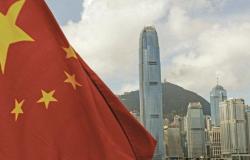Córdoba.- In Gran Vía 32 there is a “temple” for the purchase of clothing of the Argentines who pass through Madrid and want to take advantage of renewing the save daily clothes. “Is there not for children? I have grandchildren,” says a woman who drags a full car after having passed through two floors of the Irish chain Primark. That clothes outside is cheaper than in Argentina, it is already known. The unknown is whether with the decline of tariffs arranged by the Government will reach to tie what is paid outside.
A key in the gap is the Tax load: while In Argentina it is equivalent to half the pricein Spain (and in general in the European Union) does not exceed 22%. Logic is not very different from that of Chilewhere in the weekend XL of Easter there was again a “flood” of Argentines.
According to the Pro Team Foundation, the national, provincial and municipal taxes paid by the chain represent the 50.3% of the final price. That is a key difference with respect to the EU, where there is no quantity and variety of taxes in Argentina.
If the comparison is directly with Spain, one more factor is added. According to the Eurostat Statistics Center, the country has the Best price in fashion in the region. The last marked record that is 15.8% below the average of the union (it is higher in clothing and minor in footwear). In the case of Chiledirect load is VAT (19%). There are no provincial taxes or check tax.
In recent months, videos on social networks were multiplied by comparing the prices of brands that are in Argentina and also in Spain. Keep in mind that not only in that area the country is more expensive, So is in good part of supermarket, perfume and electronics products.
According to, at least so far, the imports of clothing per inhabitant are 10 times lower in Argentina than the world average. Through Decree 236/2025, clothing and footwear tariffs went from 35% to 20%; those of fabrics, from 26% to 18%; and those of different types of yarns, from 18% to 12, 14 and 16%.
-Import clothes to Chile implies a 6%general tariff, but If it comes from a country with a current commercial agreement and the necessary conditions are met, it is possible to access tariff reductions or exemptions.
In the EU, the average tariff is 4.5%. Throughout the region, Asia It strengthens as the main supplier. In Spain at the head are China and Bangladesh, and they have been increasing their participation Vietnam and Cambodia. Morocco also strengthens himself as a seller, while Türkiye lost some weight. Two neighboring countries occupy the third and fourth place in that ranking: they are France and Italy.
For example, in the case of Inditex Group Founded by Amancio Ortega, analysts emphasize that much of their success is explained by its “global supply, production and logistics chain very well oiled”. It has around 1,400 suppliers, 3,680 factories and 3.2 million indirect workers. He 48% of its products are made in Spain, Portugal, Türkiye and Morocco and although China lost some relevance, it remains the main Production concentrator.
The tax and market size differences are two items that are not resolved with tariffs. For example, the Primark of Gran Vía receives 5 million people a yearmore than the Prado Museum.
In his proposal, Fundar recommended, in addition to facilitating imports – providing “those items in which the productive capacity is zero or minimal” -,, Promote incentives for both supply and formal clothing demand. The latter includes measures such as Production tax reduction (for example, the Gross Tax or Income), the implementation of A regime of employer contributions for small businesses – not only of the textile sector, but for the entire economy – and the creation of A non -refundable, decreasing in time, which subsidizes up to 10% of employer contributions in medium and large clothing companies.
It also includes progress in a policy “of socioproductive integration”For the informal companies of the industry, whose working conditions are very poor. This, among other things, includes promoting cooperative clothing poles.






